Otowi Mesa Trail 7/6/20 4:50 cloudy and warm post-rain with a very slight breeze.
Connecting with a place can be very difficult when you’re not actually in the place, and since one of the big ways I connect with places is by smell I decided to do a small field guide like post that depicts some of the common species of plant at my spot through the lense of smell. While I was thinking about how to do this I realized that people would obviously smell things in completely different ways from me and so I dragged a couple of my friends along to lend me their senses as well to expand the descriptions. In addition to smell, I felt that a photo would also help, and since I connected most with the photography blog assignment I thought it was fitting.
For each species, I am going to try to give some context for location and type of plant if I don’t feel it is obvious in the picture. Also, the smell observations are each three description words and are split up by person between me and my two friends.
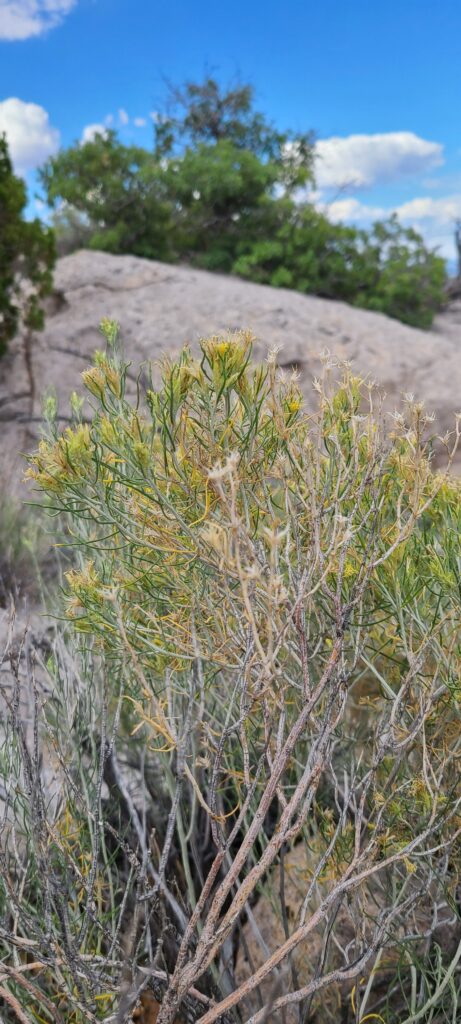
Rubber Rabbitbush scent observations:
J: warm, light lemon A: gentle, sweet, verbena T: soft, dusty, comforting spice
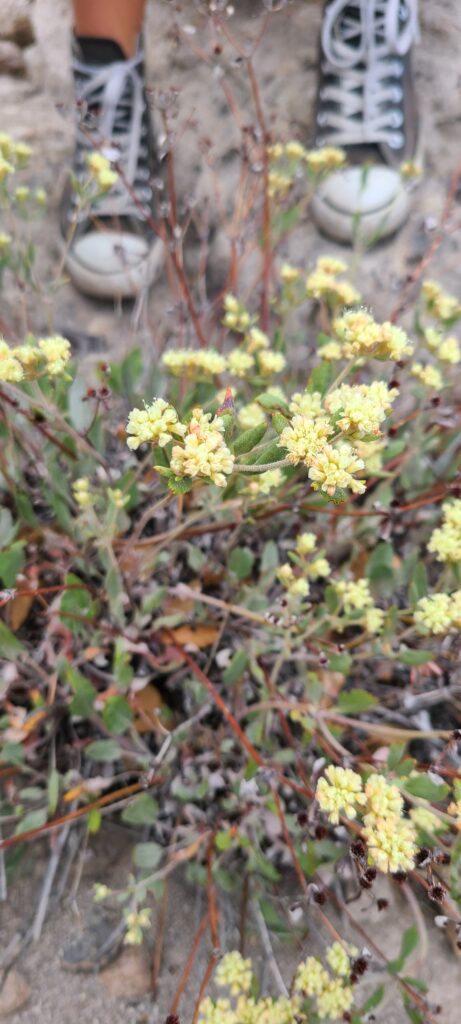
Sulfur Buckwheat scent observations:
J: savory, dandelion-like, spicy A: oaky, daisy-like, rich T: beeswax, woody, old
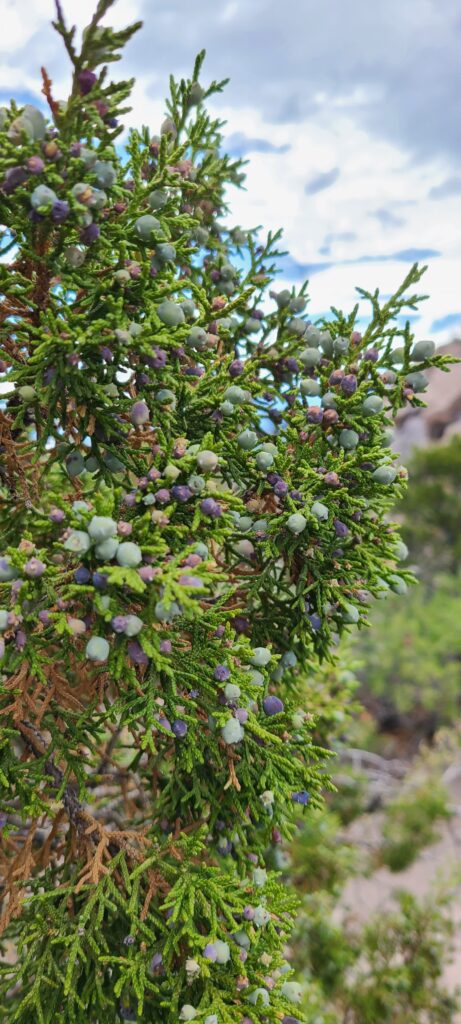
One-seed Juniper scent observations:
J: waxy, peppery, fresh A: sugary, dense, sappy T: minty, windy, dried apricot-like
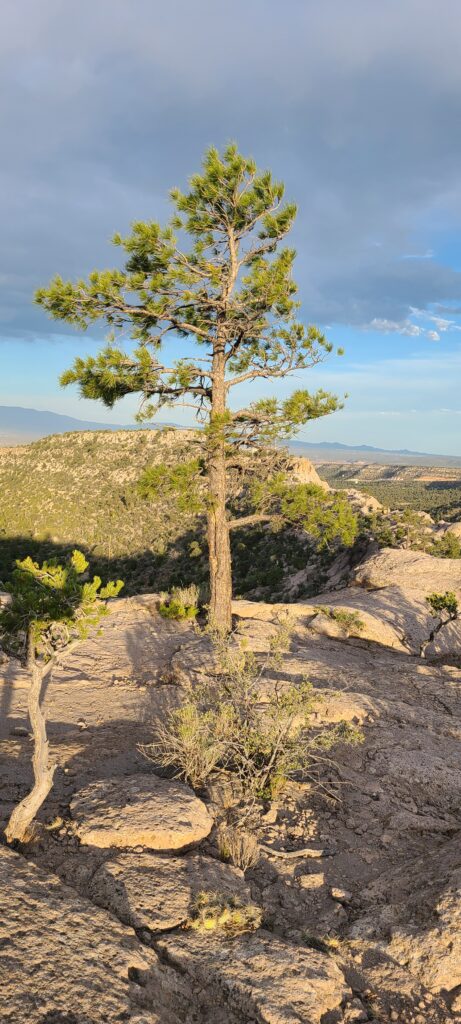
Ponderosa Pine scent observations:
J: vanilla, dust, smoke A: vanilla, cream, soft T: vanilla, holiday, organic
I hope that as you read through the observations you could get a hint of what my spot feels like based on one sense. One of the main reasons I chose this place as my site is because of the smell so I hope that by sharing this scent field guide you feel a hint of the connection I do. Overall I think this assignment has allowed me to stop and connect to nature in a way that I don’t normally allow myself to.
As a final ‘goodbye’ to my spot, I put it in quotes because I’m definitely going back so it isn’t actually goodbye, my friends and I made a rock cairn near the edge of the mesa to commemorate my final blog. As storm clouds made their way over the mountains in the distance I snapped one last picture before heading out.
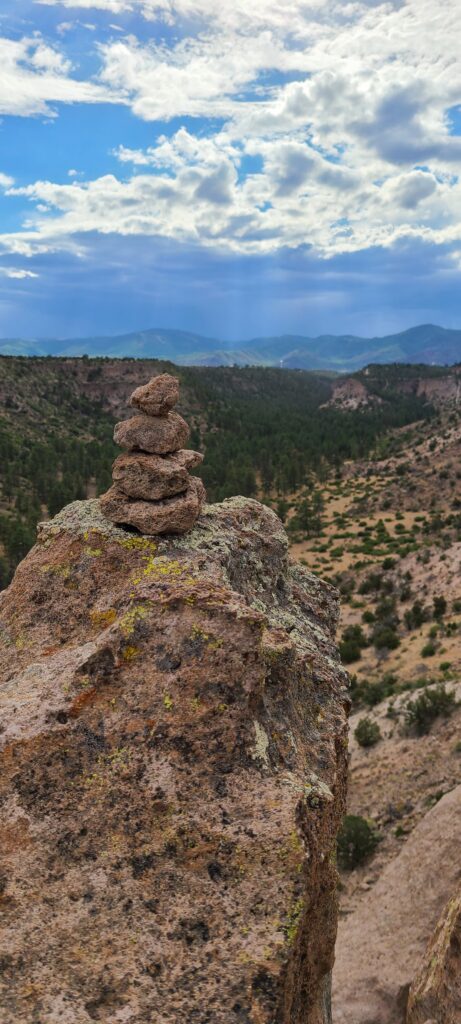

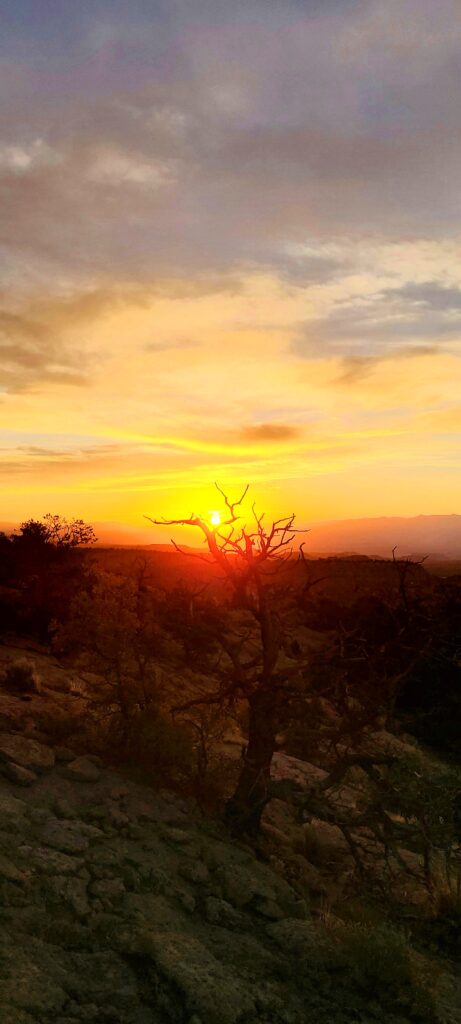

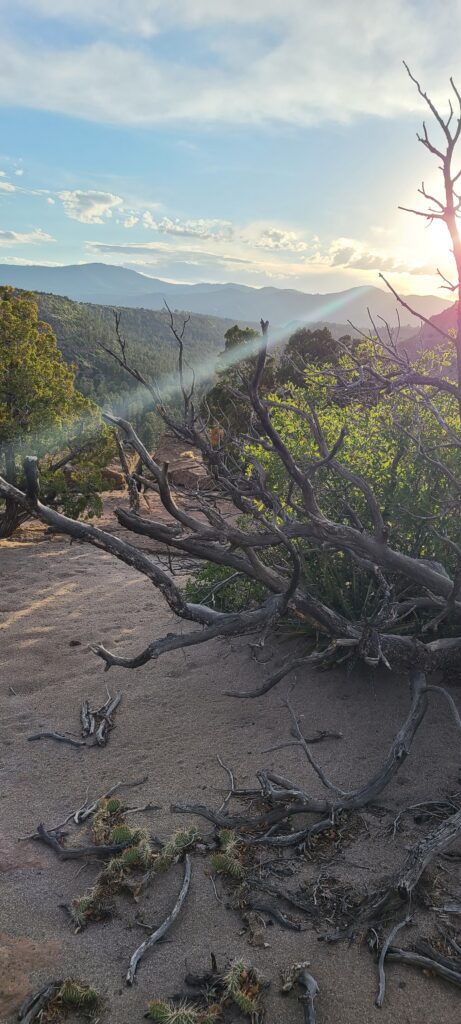
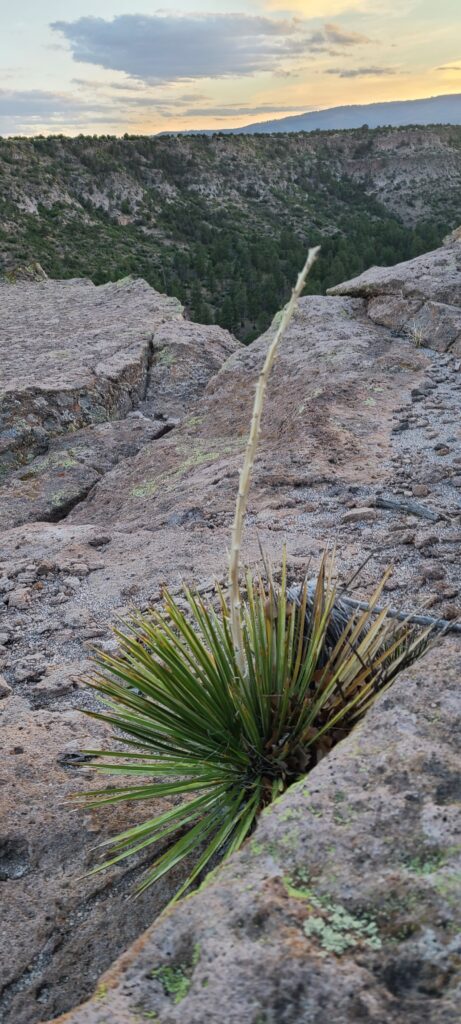
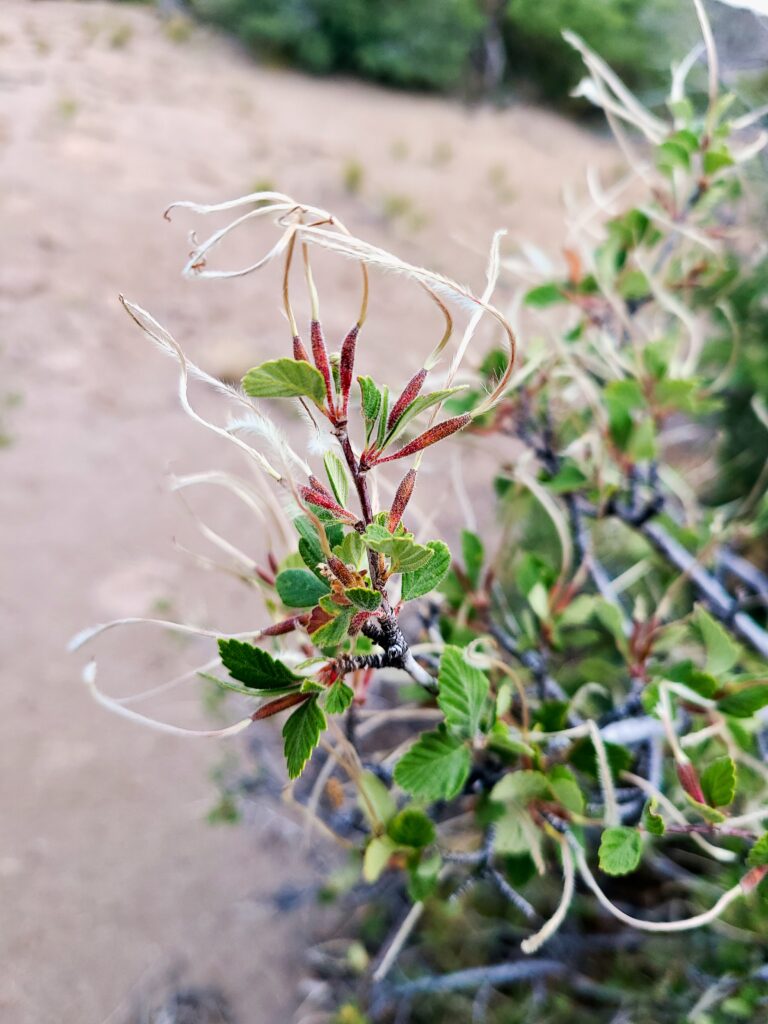

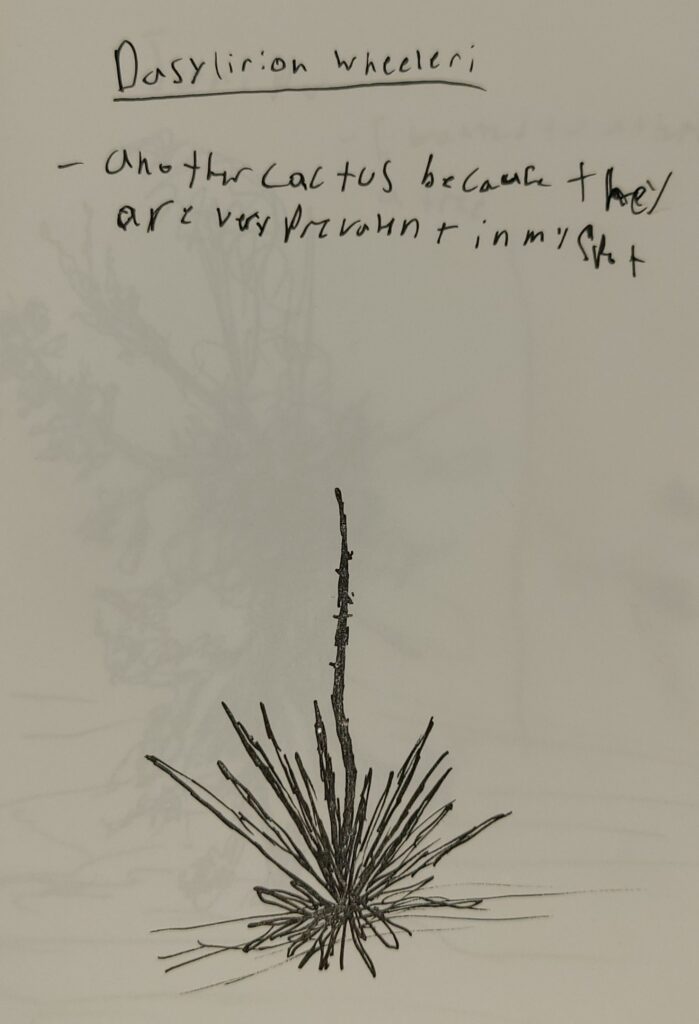

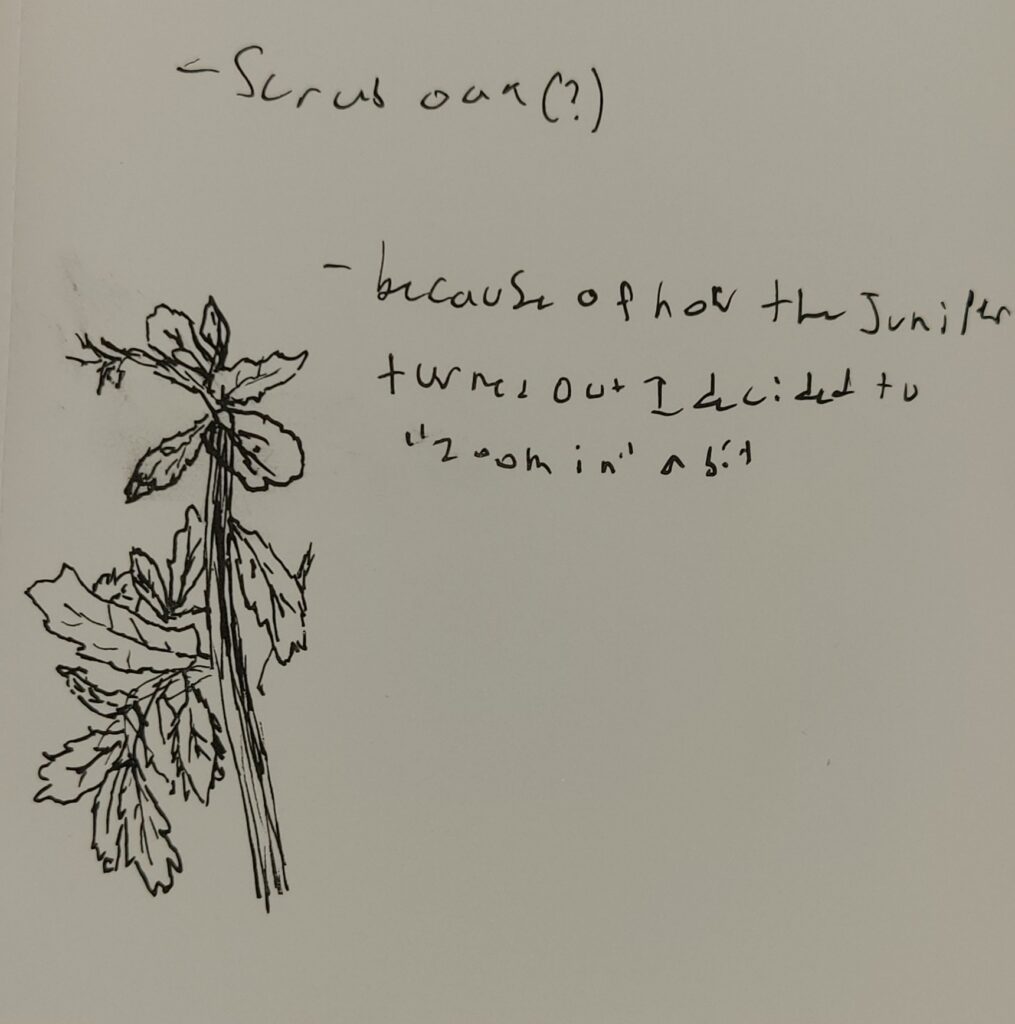

Recent Comments